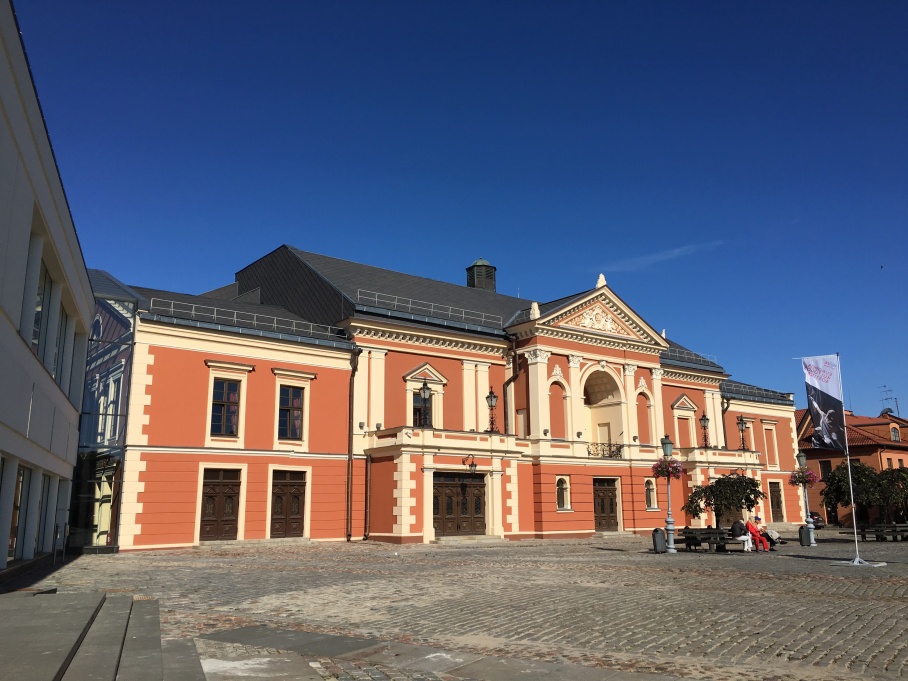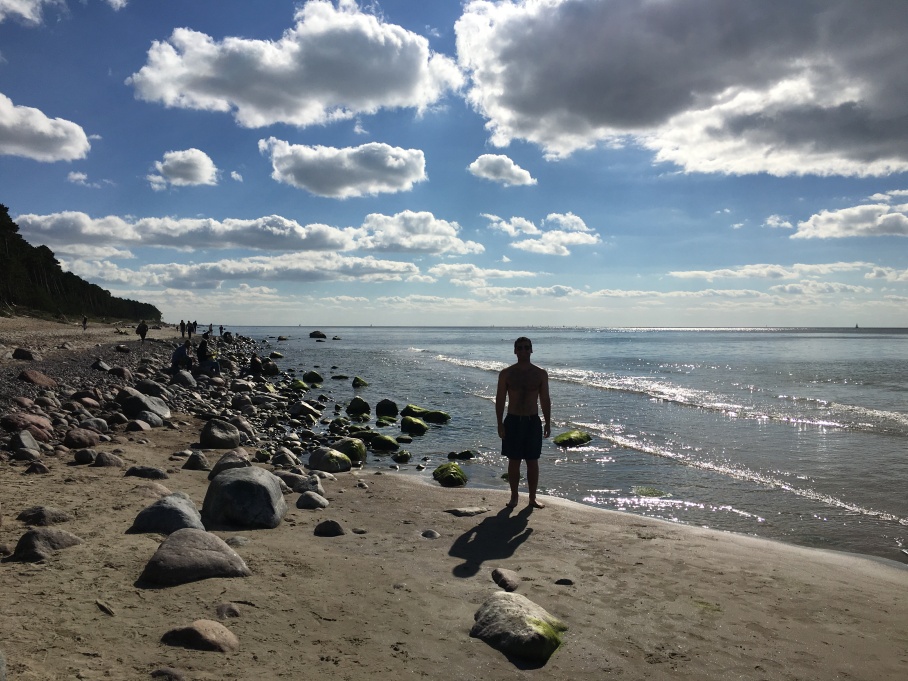Had a spectacular sleep. It put into perspective just how crummy our dormitory accommodations are.
Ate a large breakfast at the hotel buffet. Our bus to the beach wasn’t to leave until the early afternoon, so I figured I’d use the free time to explore the city.
Designed a route using my handy-dandy guide book. Kristiaan, Robbin and Enola joined. I’ve become the de facto tour guide of the group. Later, two of Enola’s French friends joined- Pauline (Normandy) and Thomas (Leon).
In spite of its national affiliation at present, Klaipeda (historically ‘Memel’) is of Prussian origins:
- The indigenous Prussian tribes were conquered by the Teutonic Knights (German crusaders) in the 13th century. Along with their Latvian and Estonian counterpart (the Livonian Knights), the Teutonic Knights were the most persistent foe of early Lithuania.
- After a series of crushing defeats in the following centuries, the Teutonic State was divided into the Duchy of Prussia (Polish fief) and Royal Prussia (Polish region).
- The Duchy of Prussia merged with the Electorate of Brandenburg (HRE) in the 17th century to become Brandenburg-Prussia, which would gain Kingdom status in 1701.
- The Kingdom of Prussia annexed (reunified with) Royal Prussia during the 1st Partition of Poland (1772).
- Prussia (led by Otto von Bismarck) would become the driving force behind the unification of the German Empire in the 19th century.
- After crushing defeats during the World Wars, the Prussian territories were lost to the Soviets, Poland, and Lithuania.
Klaipeda is divided by the River Dane. Our hotel, described in my guide book as a ‘massive bulk’, dominates the New Town square.

The New Town square also includes the Old Town Hall, where Prussian Court was temporarily moved in 1807 from Napoleonic Berlin.

We crossed the Dane into Old Town.

Our first stop was the Drama Theater, which dominates the Old Town square. Over the course of its illustrious history, the Drama Theater hosted a who’s who of anti-semites, including Wagner and Hitler. Indeed, it was on the Theater balcony in 1939, that Hitler emphatically announced the reincorporation of Klaipeda into German hands.

From there we traveled along a cobblestone road to the market. The ambiance was distinct from other Lithuanian towns visited, emblematic of the Prussian origins and seaside proximity.

The market was lively.

As the others browsed, I ventured quickly to the old Jewish cemetery. It was (as expected) destroyed by the Soviets.

On the way back to the hotel we walked by the ruins of the castle, which has origins in the Teutonic era.

We boarded the bus for a quick ride to the Dutchman’s Cap, a cliff that lies along the coast of the Baltic Sea.

We slowly made our way down the hill to the sandy beach.

The water was frigid, but we were determined.


The sun eventually made its way out.

Kristiaan, Robbin, Enola and I decided to walk the shoreline until we found food. I used the time to talk with my parents.

After a long walk with no success, Robbin turned around. The rest of us carried on and eventually found a seaside restaurant. We ate Kubdari.
We made the long walk back (almost 5km) and slept on the bus until the group arrived an hour later.

Back at the hotel we showered before heading to dinner at the rooftop restaurant. It was the best meal I’d had in Lithuania.

Briefly attended the pregame before heading back to my room. Didn’t attempt to go out again.
Watched ‘the Imaginarium of Doctor Parnassus’ and raided the mini-fridge.
